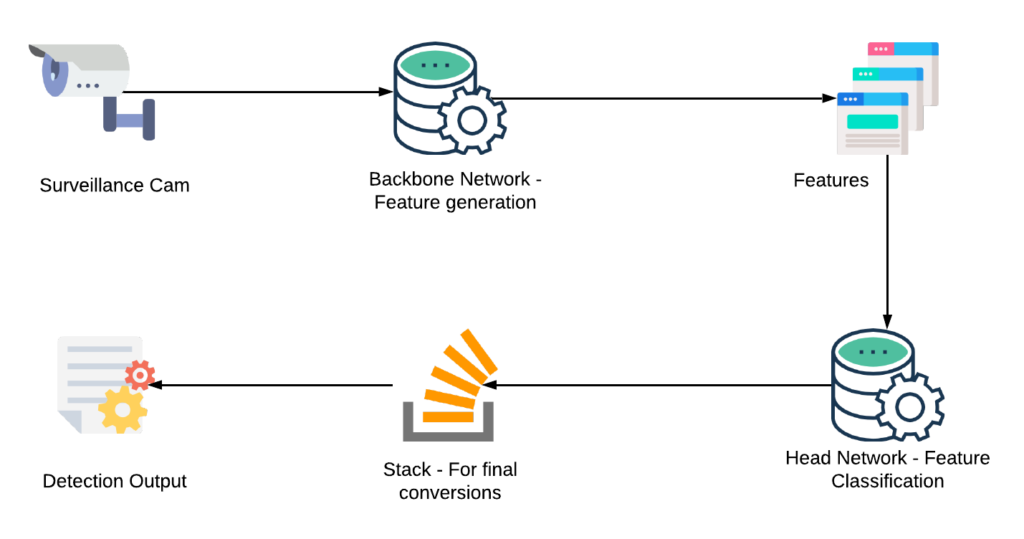

Ride-hailing services have established themselves as an essential part of travel. But recent reports suggest that the safety of the passenger and the driver can be at risk. Cab service companies have tried to address this concern by adding some features but these seem to be inadequate. By intergrating anomaly detection using machine learning into the surveillance systems, companies get to address many issues from monitoring driver/passenger behavior to proper accident management.
The number of crimes being committed in ride-hailing and taxicabs is on a steady rise. This is evident from the number of reports being filed by drivers for criminal assault and battery. From the drivers to the passengers, the safety concerns surrounding taxicab journeys are increasing by the decade.
Recently, a drunken man attacked a Lyft driver in Florida, putting the cab driver in a chokehold from the backseat. In Delhi, six men broke a window of an Ola cab and assaulted the driver and passenger. The image below shows a few of the several such crimes recently reported in google news.

“It’s not a good feeling to have a gun to your head,” said Santanu Bose, a cab driver who lives in Rogers Park. He said he’s been robbed twice since becoming a licensed cab driver. “It did shake me up quite a lot for a few weeks.”
According to the Bureau of Labour statistics, workplace violence remains a leading source of occupational fatalities and injuries with taxicab drivers. Historically, they have experienced one of the highest homicide rates of any occupation. According to a study published by the American Journal of Preventive Medicine, the taxicab driver homicide rate was 7.4 per 100,000 drivers in 2010.

The increasing number of fatalities is turning into a serious predicament for companies like Uber, Lyft, Ola and other ride hailing companies. This creates the need to enhance the security measures for better protection of cab drivers as well as passengers. Some of the major precautions that are being taken to ensure the safety of cab drivers today are as follows:
The most preferred safety precaution that organizations use is the installation of an in-cab surveillance camera. These cameras give perpetrators the feeling of being watched, which acts as a deterrent. It also increases the arrest rate of such criminals.
Unfortunately, surveillance cameras are only used for investigative purposes. That is after the crime has been committed, law enforcement officials can playback the footage and analyze it to collect evidence. But, in today’s digitally empowered era, shouldn’t we expect more sophisticated solutions that can actually help prevent these crimes from happening in the first place?
This is where the relevance of anomaly detection using machine learing comes into play.
Take a look at the below topics to know more:
Anomaly detection is a technique that is used to identify items or events that do not conform to an expected pattern. Such techniques are used in situations where abnormal behavior needs to be identified.
By using machine learning-powered anomaly detection systems in taxi cabs, the occurrence of crimes can be detected in real-time. These systems can immediately identify the occurrence of anomalous activities such as assault, theft, rape, the presence of harmful objects or weapons, disputes, etc. Such a system can alert the concerned party, say, nearby police officials, to take necessary action. Timely alerts can help in more proactive engagement from the police department.
1. Real time alerts about mishaps
If any abnormal behavior is detected by the system, it immediately generates an alert or notification that can be sent to the nearest police department. This can help law enforcement authorities to take timely action, and diffuse the situation before it gets out of hand.
2. Face identification to detect potential threats
The system can automatically identify the faces of passengers. It can use information from the company’s database of blacklisted passengers or public police databases of wanted criminals to identify any potential threats. If the system matches the face of a passenger to any of these databases, a notification will be sent to the concerned authority as well as notify the cab driver to stay safe.
Related article on How anomaly detection can help today’s business world
The video above shows the anomaly detection module of Emotyx – an AI-powered real-time video analytics suite. The real-time video feed from a surveillance camera is a series of video frames. For anomaly detection, the system performs classification models on every incoming frame, which will classify the frame into either an anomalous or non-anomalous class. Here, information captured from the previous frame is linked to the current active instance, to derive intelligent inferences.

Emotyx uses a proprietary hybrid neural network that has a core backbone net that generates high dimensional features from a set of continuous frames instead of every single frame. It also has a head net, which classifies the features generated by the backbone. 3D Convolutional Neural Networks (3D ConvNets) learn spatiotemporal features far better than the conventional 2D Convolutional Neural Networks (2D ConvNets). Orthodox 2D ConvNets run different filters on inputs both horizontally and vertically.
In layman’s terms, 2D ConvNets are capable of processing 2-dimensional inputs only. But the 3D ConvNets takes the time axis into its consideration along with the existing 2-dimensions. The 3D network which we designed can capture spatial information from the set of inputs. Emotyx batches a continuous bag of frames into one and passes it to the network to generate features. The output is sent to the head net, which is a linear classifier for the final classification task. The head net is shallow in nature but was able to fit well for the specific use case.
To facilitate inter-communication among the two networks and for the final conversion of the classifier’s results, Emotyx uses different prime data structures like stacks and queues. The results of the classifier are stacked to a certain threshold to see whether there is a potential difference in the pattern or not. This difference might indicate a probable event of interest. Where in this case, detection of assault, theft, and other unfavorable events. The different metrics Emotyx uses to test the network include Area Under the Curve (AUC) and F1 score.
AI-powered anomaly detection can be helpful in several other areas as well, such as public places, factory premises, prisons, etc. Here is a video of Emotyx’s anomaly detection module that can detect anomalies like an explosion, fights, robbery, etc.
Violence in taxicabs is still prevalent, despite the precautionary measures being taken by ride-hailing service companies like Uber and Ola. By using the AI-powered anomaly detection feature of Emotyx, it is possible to detect any violent behavior and send alerts to law enforcement authorities for corrective action.
Would you like to discuss more on this?
Want to learn more about real-time video analytics
Take a look at the below points to gain better insight into the need for having an anomaly detection system to ensure the safety of passengers and drivers.
Related article on How machine learning is improving our fraud detection systems
Automated anomaly detection using machine learning helps to eliminate the concerns around security and safety in ride-hailing services. The systems provide better insights into the root causes and thus help the authorities take preventive measures to avoid the detected anomalies. Ensuring the safety of the passengers and the driver can lead to a better experience for both employees and the customers of the ride-hailing companies thus helping to boost overall productivity.
Get a demo of our solution